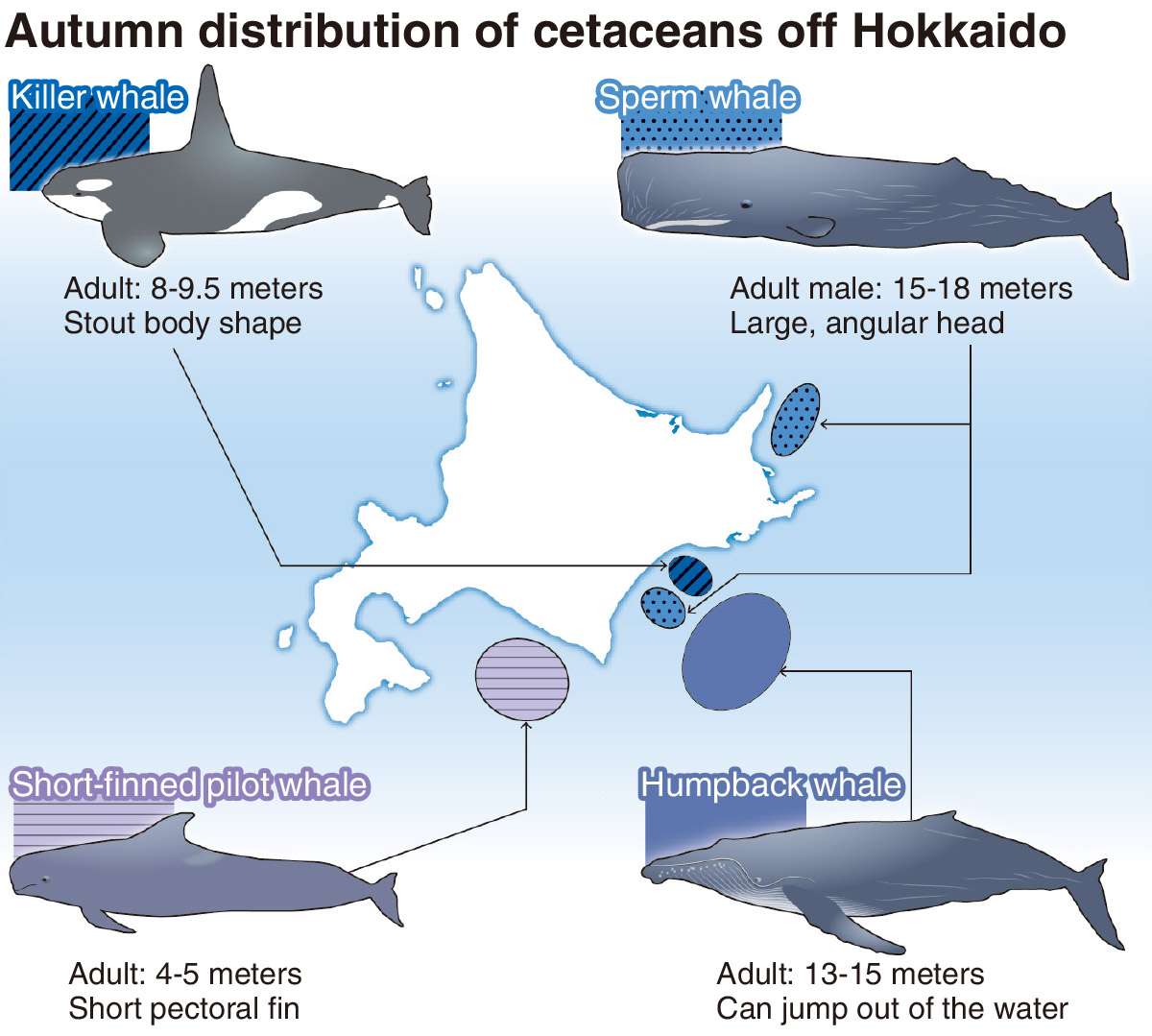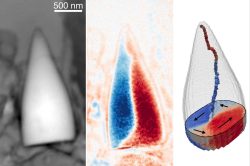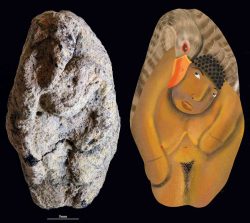
12:22 JST, June 15, 2023
Sperm whales and other cetaceans that come to the waters around Hokkaido in autumn having differing preferences when it comes to things like ocean depth and temperature, according to a team of researchers from Kyoto University and Hokkaido University.
The team analyzed the distribution of cetaceans in Hokkaido’s coastal areas and the relationship with the marine environment. Drawn from more than 10 years of observation, the results will likely contribute to the conservation of cetaceans.
The analysis has recently been published in an international academic journal.
A variety of cetaceans migrate to the waters around Hokkaido each autumn, but details about their ecology are unknown.
The team conducted surveys on 21 occasions in September and October from 2009 to 2021 aboard a Hokkaido University training ship. Members studied 11 species, including sperm whales, based on such factors as where they were found, water depth, seafloor topography and seawater temperature, and analyzed the relationship between the distribution of these species and the marine environment.
Sperm whales were found mainly on the southern coast of the Shiretoko Peninsula, where the seafloor slopes steeply. They are believed to prefer this area because sperm whales dive into steep underwater valleys at depths of more than 3,000 meters to hunt for food. These marine areas are said to be abundant feeding grounds for them.
The water temperature is relatively high on the west side of Cape Erimo, which juts out to the south, and many short-finned pilot whales that prefer warmer water were found there.
Killer whales, on the other hand, were found on the eastern side of the cape and also around Shiretoko Peninsula, where the water temperature is lower.
“It’s important to continue the research, so as to gauge the recovery in the cetacean population following the cessation of whaling as well as the effects of rising ocean temperatures due to global warming,” said Yoko Mitani, a member of the team and a researcher at the Wildlife Research Center of Kyoto University.
Hiroto Murase, associate professor of cetacean biology at Tokyo University of Marine Science and Technology, said: “Cetaceans generally have a long life span, so changes in the population and distribution tend to occur slowly. I hope that with further research, more information will be compiled.”
"Science & Nature" POPULAR ARTICLE
-

Mass Oyster Die-Offs Confirmed in Japan’s Seto Inland Sea; High Water Temperature Cited as Primary Cause
-

Researchers in U.S., Japan Offer Insight into Ghostly Neutrinos
-

Big Leap in Quest to Get to Bottom of Climate Ice Mystery
-

Security Camera Footage Vulnerable to Outside Access; Investigation Finds 3,000 Pieces Exposed Online
-

Japan Plans to Develop System of AI Evaluating Credibility of Other AI Models
JN ACCESS RANKING
-

Govt Plans to Urge Municipalities to Help Residents Cope with Rising Prices
-

Japan Prime Minister Takaichi Vows to Have Country Exit Deflation, Closely Monitor Economic Indicators
-

Japan to Charge Foreigners More for Residence Permits, Looking to Align with Western Countries
-

Japan GDP Down Annualized 1.8% in July-Sept.
-

JR East Suica’s Penguin to Retire at End of FY2026; Baton to be Passed to New Character
























